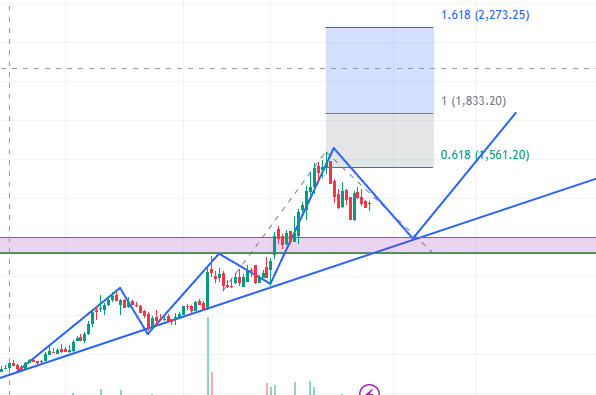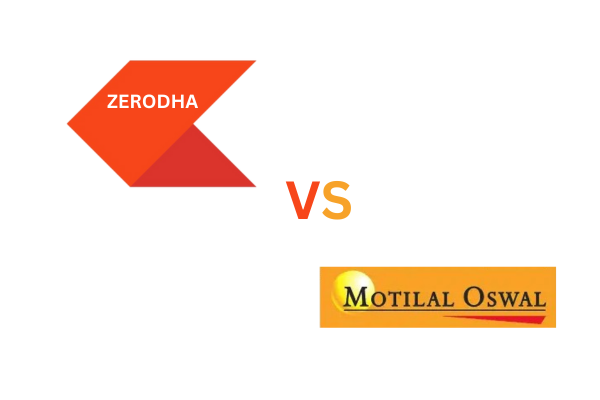The Importance of Fibonacci Extensions in Risk Management cannot be overstated for traders looking to strike a balance between maximizing profit potential and minimizing risk. Fibonacci extensions are an essential tool for identifying key levels beyond the current price action, allowing traders to set realistic profit targets, manage stop-loss placements, and ensure disciplined decision-making.
This comprehensive guide delves into The Importance of Fibonacci Extensions in Risk Management, covering the basics of Fibonacci extensions, how they function, and practical strategies for incorporating them into your trading routine.
Fibonacci retracement helps traders identify key price levels for potential reversals, aiding in spotting high-probability trades. Combining retracement with Fibonacci extensions enhances The Importance of Fibonacci Extensions in Risk Management, as it refines entry and exit strategies, ensuring disciplined trading while minimizing risks and maximizing profit opportunities.
Table of Contents
Understanding Fibonacci Extensions
Fibonacci extensions are derived from the Fibonacci sequence, a mathematical pattern that finds applications in nature, art, and financial markets. In trading, Fibonacci extensions indicate potential areas where the price may extend during a trend. These levels go beyond the usual retracement zones and include key percentages like 127.2%, 161.8%, 200%, and 261.8%.
The importance of Fibonacci extensions in risk management lies in their ability to predict where price action might slow down or reverse, helping traders anticipate future market movements.
How Fibonacci Extensions Work in Risk Management
1. Setting Realistic Profit Targets

One of the primary roles of Fibonacci extensions is identifying where a trend is likely to extend. This helps traders set logical profit targets rather than relying on arbitrary levels. For example, if a stock breaks out of a consolidation phase, Fibonacci extensions can project potential areas for price expansion.
2. Defining Risk-to-Reward Ratios

Risk-to-reward ratios are crucial for long-term trading success. By using Fibonacci extensions, traders can evaluate whether a trade setup offers a favorable ratio. If the projected profit target at a Fibonacci extension level isn’t significantly higher than the risk, the trade can be avoided or adjusted.
3. Avoiding Emotional Decision-Making

The importance of Fibonacci extensions in risk management also lies in their ability to provide structure. Instead of reacting emotionally to price movements, traders can stick to predefined plans based on Fibonacci levels, ensuring consistent and disciplined decision-making.
4. Identifying Overextension Risks

Fibonacci extensions help traders recognize when an asset’s price is overextended. For instance, if the price reaches the 200% or 261.8% Fibonacci extension level, it might signal exhaustion, prompting caution or profit-taking.
How to Use Fibonacci Extensions for Risk Management
Step 1: Identify the Trend
Before using Fibonacci extensions, determine the market trend. Are you in an uptrend or a downtrend? Extensions work best when the market is trending strongly.
Step 2: Mark the Swing High and Swing Low
Use the Fibonacci extension tool to mark the swing low and swing high for an uptrend, or the swing high and swing low for a downtrend.
Step 3: Draw the Fibonacci Extension Levels
Most trading platforms allow you to plot Fibonacci extensions. The key levels—127.2%, 161.8%, 200%, and 261.8%—will appear automatically on the chart.
Step 4: Set Profit Targets and Stop-Losses
Once the extension levels are plotted, use them to set realistic profit targets. For example:
- The 127.2% level can be a conservative target.
- The 161.8% level often serves as a primary target in trending markets.
- The 200% and 261.8% levels can be used for extended trends.
Stop-loss orders can be placed below the swing low in an uptrend or above the swing high in a downtrend, ensuring limited losses.
Why Fibonacci Extensions Enhance Risk Management
- Objective Decision-Making
The importance of Fibonacci extensions in risk management lies in their objective nature. Unlike subjective indicators, Fibonacci extensions provide mathematically derived levels, reducing the chances of emotional bias. - Universal Applicability
Fibonacci extensions work across all markets—stocks, forex, commodities, and crypto. This universality allows traders to apply the same principles consistently. - Complementing Other Tools
When combined with moving averages, trendlines, or RSI, Fibonacci extensions add an extra layer of confirmation to risk management strategies. For instance, if an extension level aligns with a major moving average, the probability of a price reaction increases. - Clarity in Volatile Markets
In fast-moving or volatile markets, Fibonacci extensions act as a guide to identify overbought or oversold conditions, helping traders avoid unnecessary risks.
Practical Examples: The Importance of Fibonacci Extensions in Risk Management
Example 1: Trading a Breakout in an Uptrend
- A stock breaks above resistance, indicating an uptrend.
- Plot the Fibonacci extension tool from the last swing low to the swing high.
- Use the 127.2% and 161.8% levels as profit targets.
- Set a stop-loss below the breakout point, ensuring limited downside risk.
Example 2: Managing Risk in a Downtrend
- Identify a downtrend in a forex pair like EUR/USD.
- Plot Fibonacci extensions from the swing high to the swing low.
- Enter a short trade at a retracement level, targeting the 161.8% extension.
- Place a stop-loss above the retracement zone to control risk.
Common Mistakes to Avoid When Using Fibonacci Extensions
- Overloading Charts with Too Many Indicators
While Fibonacci extensions are powerful, cluttering charts with too many tools can lead to confusion. Stick to a few complementary indicators. - Ignoring Market Context
The importance of Fibonacci extensions in risk management diminishes if they’re used without considering broader market trends or fundamentals. - Misidentifying Swing Highs and Lows
Incorrectly plotting Fibonacci extensions leads to unreliable levels, potentially harming your trading strategy. Always double-check your points. - Relying Solely on Fibonacci Extensions
While effective, Fibonacci extensions should not be the only tool in your arsenal. Use them alongside other risk management and analysis methods.
Benefits of Using Fibonacci Extensions for Risk Management
- Improved Profitability: By targeting specific levels, traders can maximize returns on successful trades.
- Reduced Losses: Clear stop-loss levels based on Fibonacci extensions ensure minimal losses.
- Higher Consistency: Sticking to predefined Fibonacci levels promotes consistent trading behavior.
- Enhanced Confidence: Traders gain confidence by knowing their decisions are backed by reliable tools.
The Importance of Fibonacci Extensions in Risk Management lies in their ability to provide structure, objectivity, and clarity in the complex world of trading. By using Fibonacci extensions to identify profit targets, manage stop-losses, and evaluate risk-to-reward ratios, traders can enhance their decision-making process and achieve consistent success.
Integrating Fibonacci extensions into your trading strategy requires discipline and practice, but the rewards are well worth the effort. Start applying these principles today and experience the transformative impact of Fibonacci extensions on your trading performance.





